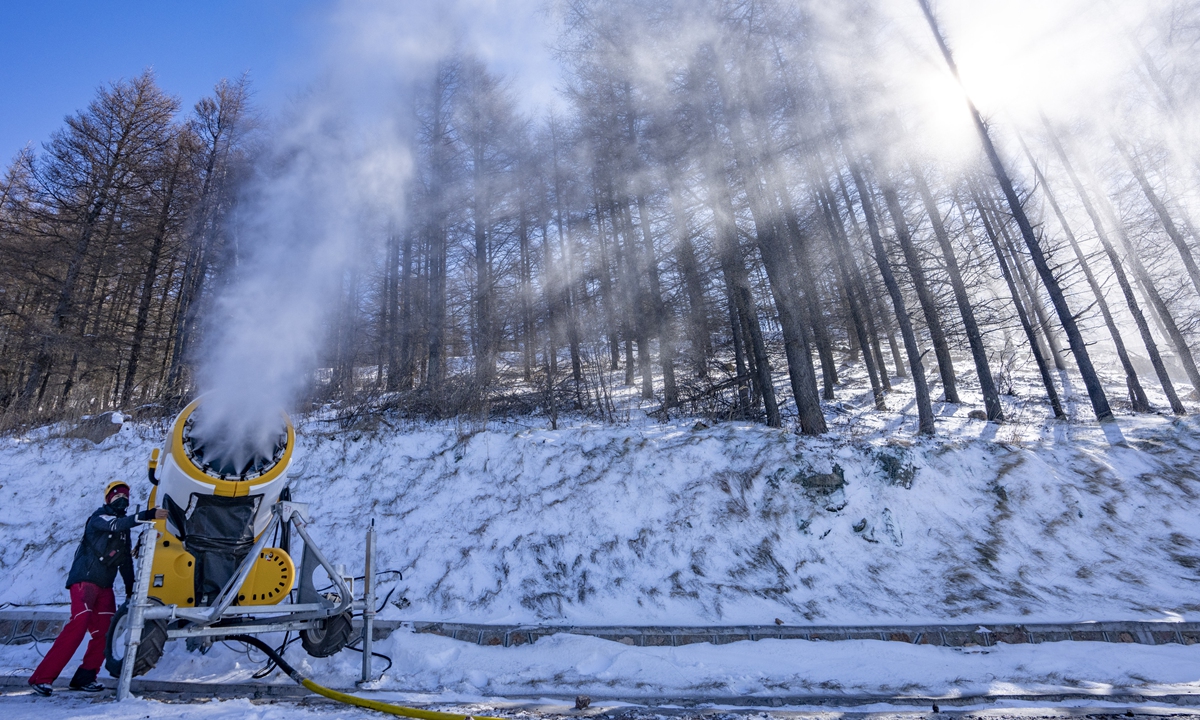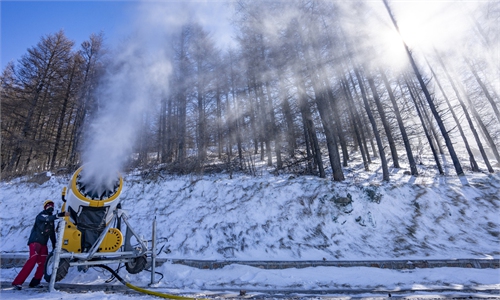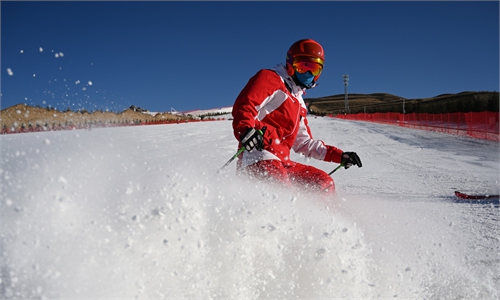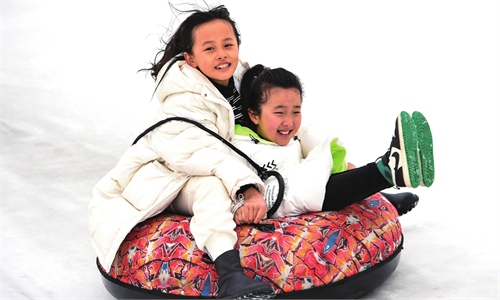
Staff at the National Alpine Ski Center in Yanqing, Beijing, begin to create artificial snow for the Beijing 2022 Winter Olympics on November 15, 2021. Photo: VCG
As China's growing winter sports industry gains momentum from the Beijing 2022 Winter Olympics, some members of the Chinese People's Political Consultative Conference (CPPCC) have set their sights on the development of the sector, with proposals to boost the snow and ice equipment manufacturing industry and especially, develop ice sports in the Guangdong-Hong Kong-Macao Greater Bay Area.
Bian Zhiliang, a CPPCC member and chairman of Taishan Sports Industry Group, told the Global Times that he has proposed to boost the domestic ice and snow manufacturing sector, support scientific and technological innovation by the companies, and promote the localization of ice and snow equipment manufacturing.
Beijing 2022 not only saw outstanding performances by Chinese athletes, but also witnessed the emergence of a large number of domestically made snow and ice products, including the first snow wax car.
"It is anticipated that more and more enterprises will invest in the research and development of snow and ice equipment, which will win the approval and trust of consumers," Bian said.
Faced with a low purchase rate of domestic ice and snow equipment in China, Bian suggested in his proposal that the Chinese sports administration should increase the purchase rate of domestically made snow and ice sports equipment, and use such items more widely for events and training.
China's ice and snow equipment industry is still faced with problems in technology breakthroughs, imperfect technical standard systems and the urgent need to optimize the industrial system, Bian said.
"To solve these problems, domestic ice and snow manufacturers should increase their research and innovation input, nurture independent brands, expand the industrial market, and form an industry chain closely linked with manufacturers, distributors and end users," Bian said.
In East China's Shandong Province where Bian's enterprise is located, an industry chain has taken shape.
The province now boasts more than 100 ice and snow sports equipment manufacturing enterprises, media reported.
In addition to Shandong, the Winter Olympics added to the excitement of ice sports in South China's Guangdong-Hong Kong-Macao Greater Bay Area (GBA), said Ken Chu, CPPCC member and chairman and CEO of the Mission Hills Group.
"In the Guangdong-Hong Kong-Macao GBA, which will host the 2025 National Games, the sports atmosphere is getting stronger and stronger," Chu said, suggesting the country designate the GBA area as a national training base for ice and snow events, as well as youth talent teams, and a place to hold international and national high-level competitions.
The popularity and promotion of ice and snow sports has increased the number of participants and expanded the market, laying a solid foundation for the development of China's ice and snow industry, Liu Dongfeng, professor of sports management at Shanghai University of Sport, told the Global Times on Thursday.
Domestic ice and snow manufacturing enterprises also face challenges as China's ice and snow sports are still at the embryonic stage and need to catch up with the West in terms of technology and branding, Liu noted.
The overall scale of China's ice and snow sports industry has maintained a steady growth trend. It is estimated that the overall market size of ice and snow sports will reach 785.29 billion yuan ($124.38 billion) in 2022, according to a report sent by iiMedia Research Institute to the Global Times.
It is believed that with the increase in the number of snow and ice sports events, and multiple favorable policies, the market will continue to expand, per the iiMedia report.



